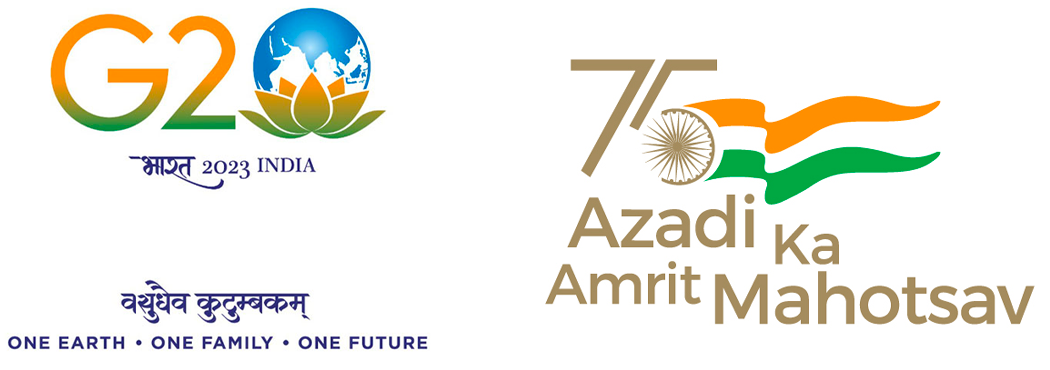No.PR-242 September 4, 2020 New Delhi Around 80% indigenisation requirement is achieved by the Indian Army and the remaining 20% is being indigenised opening more opportunities for the Indian Industry”, says Lt Gen S K Upadhya, PVSM, AVSM,SM, VSM, Master General of Ordnance, Indian Army PHD Chamber Defence & HLS Committee organised an Industry Interactive Webinar on the Indigenisation Requirements of Indian Army on 3rd September 2020 to discuss and deliberate on the current and future indigenisation requirements of Indian Army and the increasing role and opportunity for Indian defence industry. Lt Gen S K Upadhya, PVSM, AVSM, SM, VSM, Master General of Ordnance, Indian Army was the Keynote Speaker at the Webinar. Mr. Sanjay Aggarwal, Senior Vice President, PHD Chamber presented the Welcome Address and Mr. M K Gupta, Chair, PHD Chamber Defence & HLS Committee gave his introductory remarks and set the tone for discussion at the Webinar. Brig. Chander Sheikhar, Brigadier Indigenisation, Indian Army gave a detailed presentation on the Indigenisation Requirements of Indian Army and the Opportunity for the Indian Industry. Maj Gen S Pavamani, SM, ADG EM, Indian Army chaired the Q&A and also gave the concluding remarks for the Webinar. Other key panellists included Mr. Vikram Sahgal, Co-Chair, PHD Chamber Defence & HLS Committee, Col. Ramit Arora, Senior GM (Defence Business & Exports), Solar Industries India Ltd and Col. KV Kuber, Director, Aerospace and Defence, Ernst and Young. The Vote of Thanks was given by Mr. Saurabh Sanyal, Secretary General, PHD Chamber and the Webinar was moderated by Mr. Vivek Seigell, Principal Director, PHD Chamber. Lt Gen S K Upadhya, PVSM, AVSM, SM, VSM, Master General of Ordnance, Indian Army began his address by the fact that Indian Army and Indian Defence Industry are two ends of the same coin. He said that the Indian Army has requirements from clothing to Shoes to the war materials and there is a wide range of requirements of Indian Army which is an opportunity for the Industry. Around 80% of the requirements of the Indian Army is indigenised and the remaining 20% needs to be indigenised which will open more opportunities for the Indian Industry. The Indian Army is very keen to work with the Indian industry for all their requirements and also offer to handhold them especially the MSMEs. They only expect the Indian industry to be equally responsive in terms of quality of products, timely delivery and competitive pricing. He also mentioned that ammunition is a big area where the requirement is huge and so the opportunity for the Indian industry and we must have private sector suppliers also apart from OFB for ammunition, this will add new bandwidth in procurement. He also said that the quality check process is being simplified for the industry to participate more and more and to save their time and resources. Indian Army is looking at 100% indigenization and look out to industry to do more of Research and development and take technology to the next level. He was glad to address this very timely Webinar and expects PHD Chamber to organise more such interactions. Mr. Sanjay Aggarwal, Senior Vice President, PHD Chamber said that indigenisation is the capability of developing and producing any defence equipment within the country for the dual purpose of achieving self-reliance and reducing the burden of imports. As far as the indigenisation is concerned, we have to take the first steps first where we have the in house capability to manufacture the materials, components and assemblies. The industry is happy with the announcement that 74 percent foreign direct investment (FDI) will now be allowed in the defence sector through the automatic route. This will give a big impetus to local manufacturing and especially to the large number of defence MSMEs of which many are working on niche technology also. Mr. M K Gupta, Chair, PHD Chamber Defence & HLS Committee welcomed the much awaited measures which are recently announced by the Government for the growth of the Indian defence sector. He said that it will certainly fuel the growth of the defence MSMEs also. The Government is also taking an all-round approach towards indigensation right away from the raw materials to the finished products. Reference to this fact we would also like to draw your kind attention to the fact that some of the critical and strategic raw materials are imported in large quantity annually for the various defence requirements. We request that these critical and strategic raw materials should be brought under the import embargo list under the indigenisation plan if the capability exists within the Indian industry. Brig. Chander Sheikhar, Brigadier Indigenisation, Indian Army gave a detailed presentation on the Indigenisation Plan of the Indian Army under the Directorate of Indigenisation. He shared that the Indian Army is following a well laid plan for covering all the components, spare parts, assemblies, sub-assemblies, platforms and also for the upgradation. The process of registration of the industry with the Indian Army is quite simple and vendor friendly. There are three different routes for the Industry to enter in the procurement plan of the Indian Army, the RFP route, Industry funded route and the Suo-moto route. There are several measures that they are taking such as Enhancing awareness of Indian Manufactures on procedures through Seminars, Interactions, Equipment Display in ISC Meetings and during Pre Bid Meetings, Conduct of Special ISC meetings and clubbing 3-5 years requirement to make Economic Order Quantity. Mr. Vikram Sahgal, Co-Chair, PHD Chamber Defence & HLS Committee gave the industry address and hailed the Indian Army indigenisation action plan where 80% has already been indigenised and expects the remaining 20% to open more doors for the Indian industry especially the defence and other MSMEs. He also said that in last five years has seen a lot of structural reforms which has fuelled growth for the Indian industry. He said that the Indian industry expects some more support in processes of procurement and the assurance of long term orders for the industry. This will make the investment in defence production commercially viable for them. We must also focus on exports which is a huge opportunity for the Indian Industry. Col Ramit Arora said that the army and the Industry need to understand each other to work together for better indigenisation. He said that incremental indigenization should be avoided. Indian Industry can do wonders – give us a problem, allow us to give you a holistic solution. We can even re-create an alternative system to an imported one. Wherever possible, the development of complete equipment should be preferred over just some spares for imported weapon systems. He also said that indigenization proposals offered to industry need to be commercially viable. He also requested that timelines for progressing cases be adhered with as per DPM. It is not only opportunity costs, but when the Indian companies do tie-ups for foreign ToT, it is very difficult to explain the extraordinary delays. Col. KV Kuber, Director, Aerospace and Defence, Ernst and Young touched upon some important facts such as the fact we are big exporter of textiles with huge industrial corridors for textiles in the country, so we should not all import any of our clothing requirements of Indian Army. Even there are number of manufacturers of technical textiles which can supply for all our requirements. He said that if there is a good performance of the company, then what is the need of bank guarantees as it blocks a considerable resource of the manufacturers’ working capital. There should not be any Performance Bank Guarantee. If it is there, it should be only token, may be 0.1% . Lastly he also urged the Army to include those items also items for the Indian industry, which are coming out of DPSUs also Cmde. (Retd.) Mukesh Bhargava, Board Member and Vice President, L&T Defence shared that unless and until we have Rs. 3 lakh crore defence budget and a CAGR of 15% , we would not be able to meet the desired level of indigenisation and the ambitious target of $ 5 trillion economy. He said that upgradation of the existing products, components and systems which can open big opportunities for the Indian industry under indigenisation. He reiterated the fact that there should be Long Term Business Orders for making the investment by the industry commercially viable. He also requested that the performance bank guarantee should be done away with. Maj Gen S Pavamani, SM, ADG EM, Indian Army began his address by assuring that the Indian defence budget and assured that they have enough for the Industry under indigenisation. The Indian Army is working on the Long Term Sustenance Agreement plan which will offer the much required commercial viability for the Indian industry. He again mentioned that the Indian Army is committed to giving opportunities to the Indian MSMEs. He said that the orders will be commercially viable and they expect the Industry to give a quality product with timely delivery and competitive price. He also mentioned that everyone in the race will get some pie of the orders though the L1 may get more. He answered all the queries of the industry and assured all possible support to the industry for a win-win situation under the indigenisation plan. The Webinar was attended by around 150 Indian defence industry leaders and especially the MSMEs Ends Media Division PHD Chamber of Commerce and Industry
© 2023 PHDCCI | Employee login | List Of Holidays | Sitemap | Terms & Conditions | Refund Policy | Disclaimer | Privacy Policy
- About Us
- About us
- Vision & Mission
- Leadership
- Managing Committee
- Committees, Chapters & Forum 2023-24
- Secretariat
- Former Presidents
- PHD Foundations
- Annual Corporate Partnership Programme
- Annual Reports
- Internal Complaint Committee on Sexual Harassment of Women Employees at PHDCCI
- PHDCCI ANNUAL AWARDS FOR EXCELLENCE 2024
- Committees
-
-
- Mandatory Committees
- International Affairs Committees
- FORUM, CELLS, TASK FORCES AND CENTRES
- PHDCCI Policy Forum
- Architecture & Interiors Forum
- Gati-Shakti Forum
- India – Nepal Centre
- Library
- Parliamentary Forum
- Task Force on Decriminalisation of Businesses
- Task Force on Food & Future
- Task Force on ODOP
- Taskforce on Co-operatives
- Taskforce on India International Corporation (Think Tank) (BIMSTEC, BRICS, QUAD & Indo-Pacific)
- Taskforce on G-20
- Young Business Leaders Forum
-
- Expert Committees
- Agri Business
- Arts & Culture
- AYUSH
- Banking, Financial Services & Insurance
- Capital Market & Commodity Market
- Civil Aviation
- Competition Law
- Corporate Affairs
- Defence & HLS
- Direct Selling
- Direct Taxes
- Economic Affairs
- Education
- Entertainment and AVGC
- Environment & Climate Change
- Food Processing
- Housing & Urban Development
- Hydrocarbons
- Healthcare
- ICT, Electronics & Telecom
- Indirect Taxes
- Industrial Relations & HR
- Industry Affairs & EODB
- Infrastructure Development – Ports, Roads, Shipping and Waterways
- Law & Justice
- Logistics
- Media & Communications
- MSMEs
- Minerals & Metals
- New Age Business
- NCLT & IBC
- Packaging
- Power
- Railways
- Renewable Energy
- Retail, E-Commerce & Consumer Affairs
- Skill & Entrepreneurship Development
- Sports & Youth Affairs
- Startup
- Textiles
- Tourism & Hospitality
- Water Management & Water Audit
- Women, Child Development and Entrepreneurship
- Expert Committees
-
-
- States
- Research Bureau
- TIFS
- Events
- Services
- Membership
- Conference Facilities
- Media
- Career
- Contact Us
Around 80% indigenisation requirement is achieved by the Indian Army and the remaining 20% is being indigenised opening more opportunities for the Indian Industry”, says Lt Gen S K Upadhya, PVSM, AVSM,SM, VSM, Master General of Ordnance, Indian Army
© 2023 PHDCCI | Employee login | List Of Holidays | Sitemap | Terms & Conditions | Refund Policy | Disclaimer | Privacy Policy



